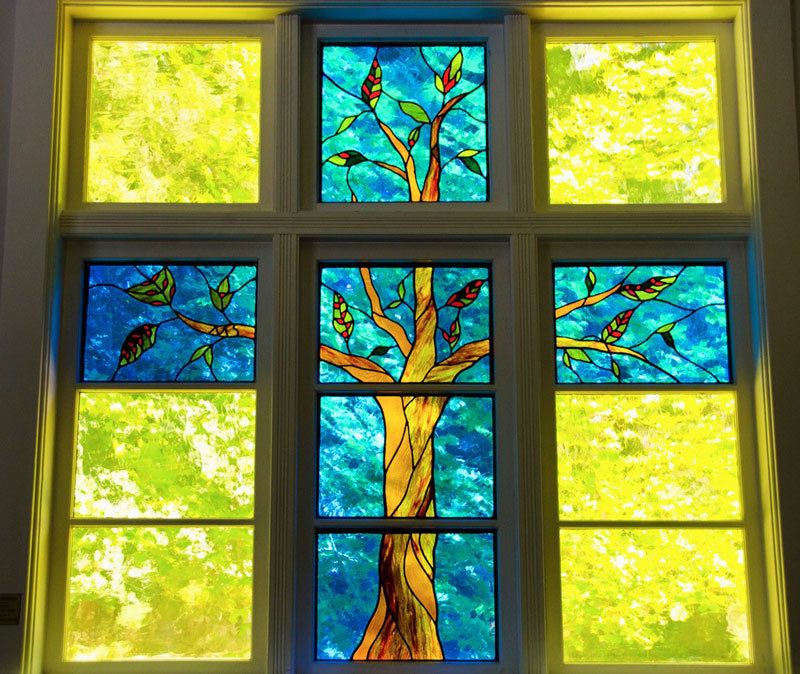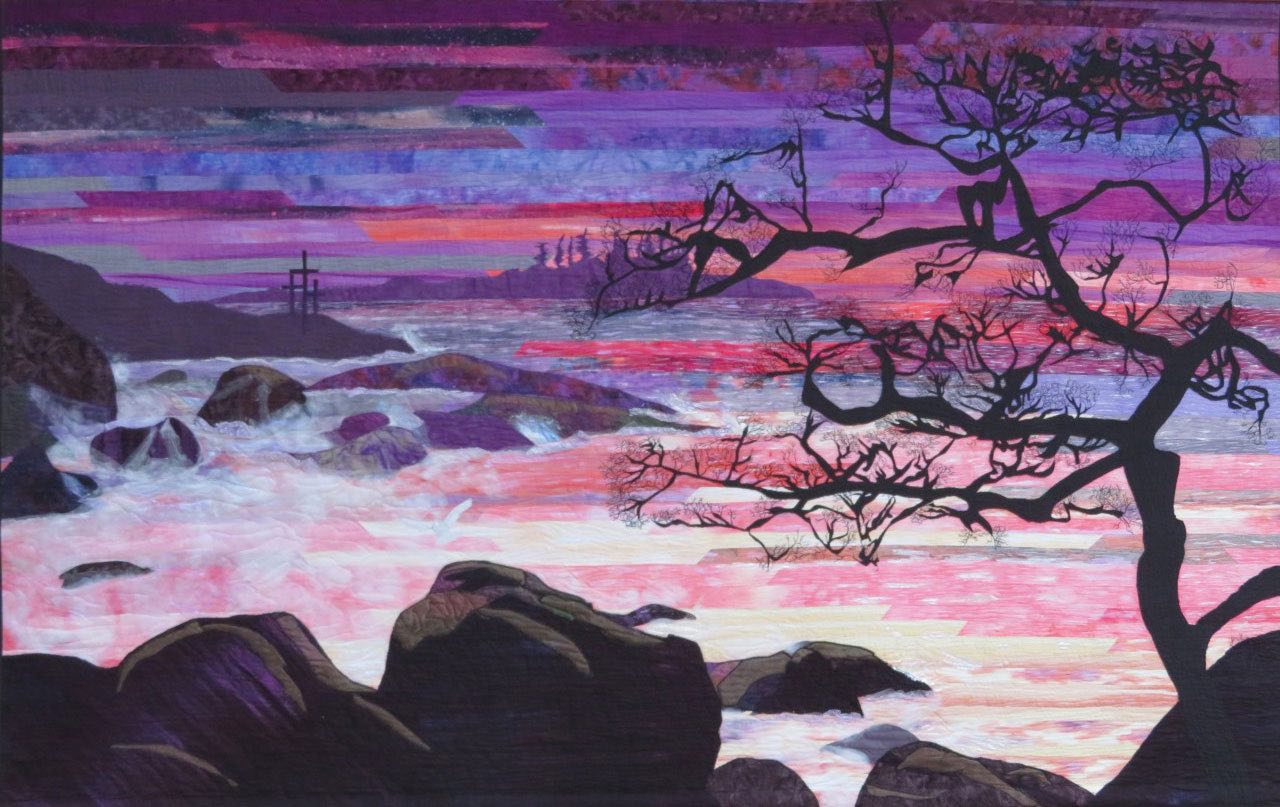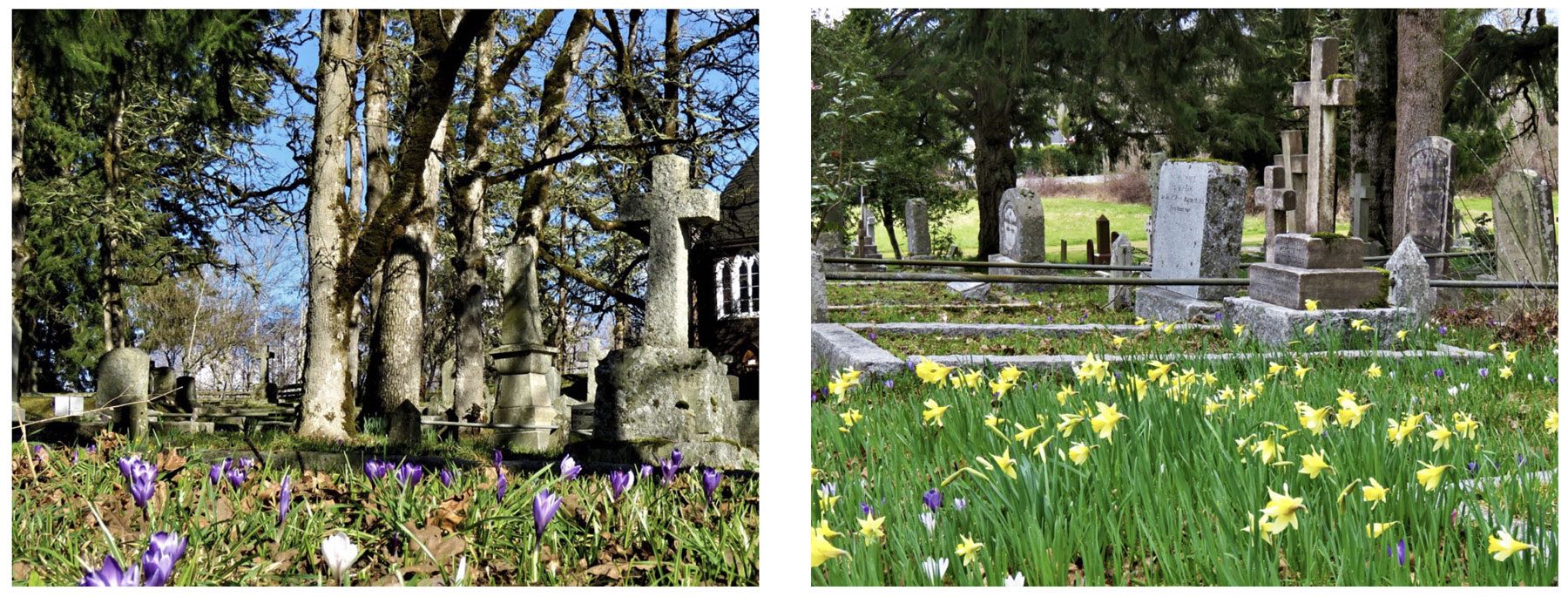How the natural world shapes our worship spaces
Here in the Diocese of Islands and Inlets, we’re lucky to be surrounded by beautiful natural spaces — oceans, beaches, mountains, and forests — and to share these islands and inlets with a diversity of wildlife, from large charismatics, such as orcas and bears, down to the smallest life forms.
Nature imagery abounds in the Bible, and many see in the natural world both the work of God and a call to care for creation. During the COVID-19 pandemic, green and blue spaces have become more vital than ever, as indoor spaces have been shuttered.

This spiritual connection to nature, and to the environment of the West Coast, comes together in many of the diocese’s churches. For some churches, this connection is quite literal as they were built from locally sources materials. St. Christopher and St. Aidan, Cowichan, for example, is built entirely from local timber. Stained glass windows also offer a connection to the wider natural world. At Christ Church Gabriola, the stained glass windows in the sanctuary feature local trees that complement the images depicting teachings from the Bible. The trees featured include arbutus, dogwood, and Douglas fir. The stained-glass windows were all designed and installed by local glass artist Darlene Mace-Harvey.
Karen Hollis, minister at Christ Church Gabriola, sees the windows as a bridge between the church’s local context and God’s larger story: “I consider all of Gabriola Island sacred space; so often when walking the trails or beaches I encounter thin places that help me see through the ordinary into the mystery of God’s creation. I walk in awe and wonder at the trees and rocks with which I share a home. The windows in our sanctuary echo these thin spaces and transport me somewhere. I regularly find my eye lingering on them as they draw me into mystery. The windows hold space for us in worship and offer beauty and layers of meaning: they are unimposing, they don’t force their stories on worshippers, rather, they stand with an open invitation, like a tree in the forest, for someone’s eye to pause and look again, to find a thin place where their stories invite us deeper into our own story, into God’s story.”
At St. Philip-by-the-Sea, Lantzville, a series of quilted tapestries — again made by a local artist, Coreen Zerr — depict the changing seasons (both in the natural world and the church) and the landscapes of Vancouver Island. The tapestries range from a family of deer in snowy woods (Christmas) to stormy seas (Lent), and from a sunrise over mountains (Easter) to a rich underwater world of whales, fish and plants (Advent). Annie Smith, people’s warden and head of the altar guild, had this to say about the tapestries: “Our wall hangings bring so much delight and joy to the people who step into St Philip. Pre-COVID-19, our church was used by many local community groups, and very often some of our guests would return to take a closer look at the wall hangings. Many people in our church community are environmentalists and appreciate the detail crafted into each picture and their subtle messages.”

While cemeteries might not immediately come to mind as a place to connect and commune with nature and God, many of our diocese’s cemeteries offer just that. At St. Peter, Quamichan, the historic cemetery slopes down from the church to the surrounding meadows and contains graves dating from 1866. The graves are shaded by oak and fir trees, while the ground is seasonally carpeted with wild flowers. The cemetery is a point of pride for parishioners, but it also attracts visitors from outside the church community. Some are simply stopping to stretch their legs, en-route to other destinations on the island, while others visit for a leisurely stroll. As well as the history and beautiful flora, visitors are often treated to sightings of squirrels, rabbits and deer, as well as the calls and songs of quail, woodpeckers and owls. In pre-COVID-19 years, the cemetery has played host to the Chocolate Lily Festival and musical performances.
Even in the more urban areas of the diocese, moments of connection to the natural world can still be found through the church. In Nanaimo, the grounds and gardens of St. Paul offer a vital green space in the mostly grey downtown inner harbour area. The garden was created with the vision and hope that it would be a place to gather, entertain and reflect. The garden was also designed to be beneficial to the local environment, with flower beds that are maintained to minimize water usage and plants that support local birds and insects, including daffodils, rhododendrons, tulips, weigela and holly berries. There are benches where people come to eat their lunch, commune with nature, listen to the birds and connect with friends and neighbours.
At St. Mary, Oak Bay, a cloistered garden was established at the church in the late 1950s. A local family looked after the garden and left money to pay for its maintenance, but over the years, despite ongoing maintenance, the garden was left looking unloved and uncared for. In 2018, a team of parishioners led by then-warden Jane Anderson had the vision to set the garden to rights.

The gardening team became aware of the Quiet Garden Movement in the U.K., which seeks to nurture outdoor spaces for quiet reflection and prayer in a range of settings, including churches, private homes, schools and hospitals. The movement takes as its leading example the periods of time that Jesus spent in nature to pray. The team also envisioned the garden at St. Mary as a space for the community, from seniors in senior homes, who often don’t have a lot of outdoor space, to the children in the pre-school based in the church hall.
During the COVID-19 pandemic, the garden has also become an extension of the worship space. During the brief period that worship was permitted in the church, chairs and speakers were set up in the garden, so that anyone who wasn’t comfortable with being inside the church could still enjoy the services. St. Mary has also been engaging the local community during the pandemic, by using the garden in a number of inventive ways. In the spring of 2020, at the beginning of lockdown, Craig Hiebert, incumbent at St. Mary, recorded videos in the garden capturing the sound of songbirds and posted them to the church’s website and social media, as a reminder that despite current events, spring was still on its way. For Remembrance Day, stones were spray painted red and black, and visitors to the garden were asked to place the stones on the ground to form the image of a poppy. Remembrance reflections were also posted throughout the garden. At Christmas, visitors were invited to decorate the garden’s crab apple tree, and dozens of ornaments appeared on the tree.
Whether it’s stained glass windows, tapestries, carvings, cemeteries, or gardens, churches in the Diocese of Islands and Inlets have plenty to offer in terms of opportunities to reflect on and enjoy the natural world and its importance to spiritual practice. And while our churches continue to be shuttered, many of these natural spaces have become more important than ever.




